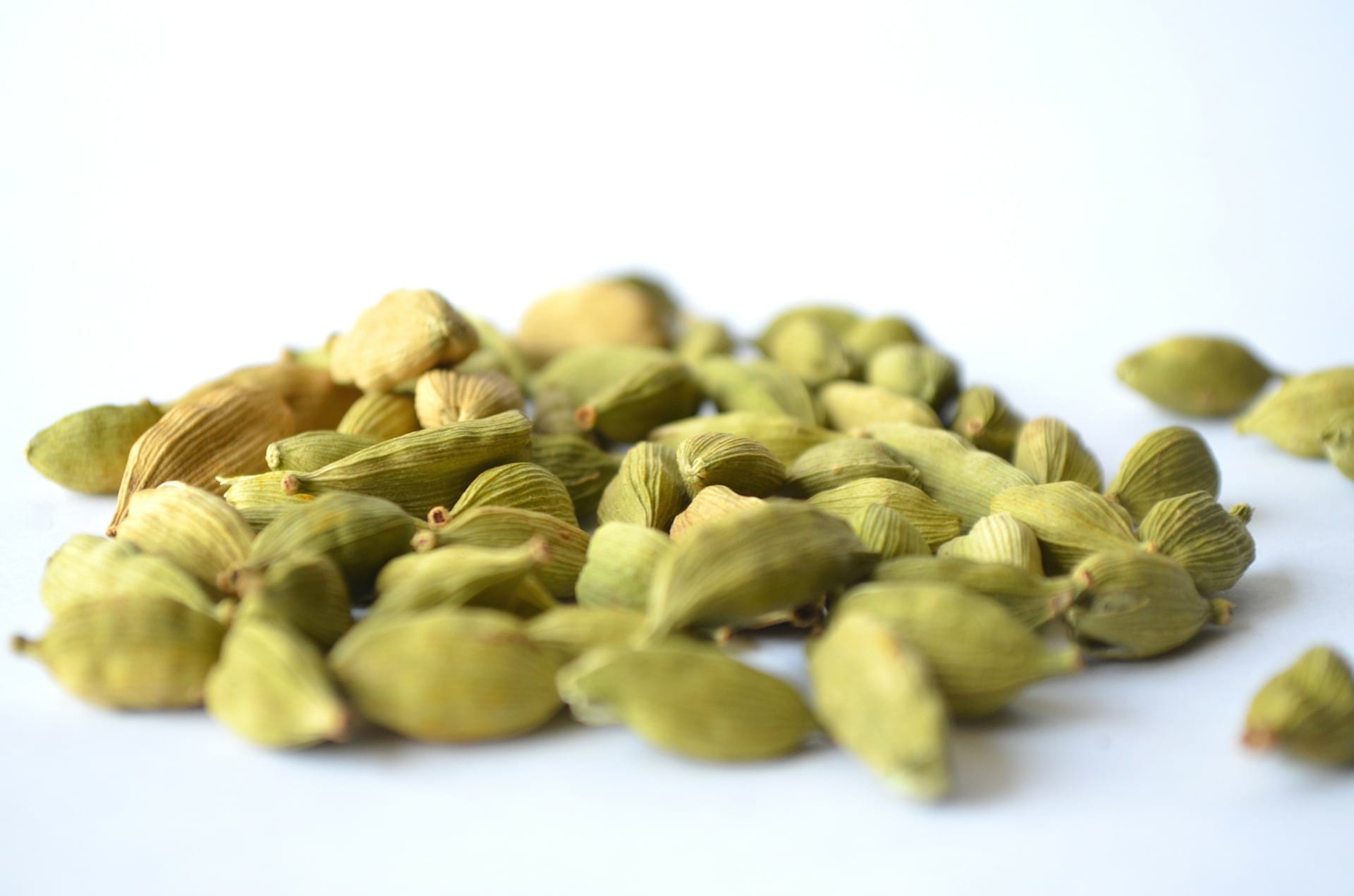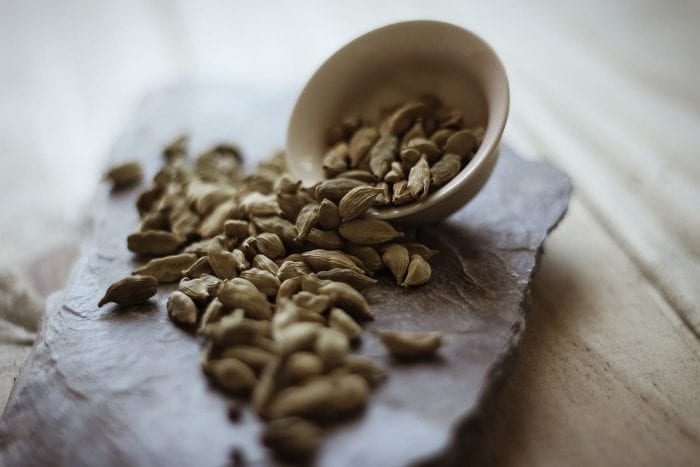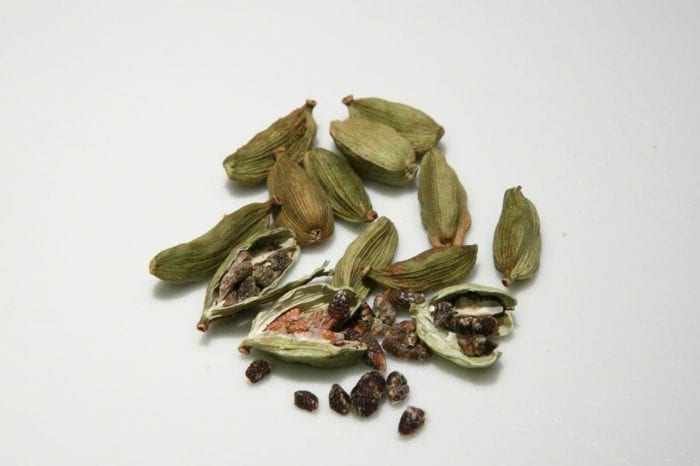
The intricate flavor of cardamom comes through as citrusy, spicy, piney, minty, and herbal all at once. Its robust complexity makes it perfect for both sweet and savory foods.
If you live in the United States, you might be the most familiar with cardamom in chai lattes. Here at BumbleBar, we blend cardamom with turmeric, ginger, and cinnamon for our Chai Almond BumbleBar (now on sale for just $1 per bar!). The warmth of the sesame seeds and the sweet buttery flavor of the almonds pairs perfectly with the slightly spicy medley—if we, ahem, do say so ourselves.
Where Does Cardamom Come From?
The spice grows on a plant from the ginger family, called Elettaria cardamomum. A thin papery pod encases the seeds. The pod can be cooked whole in a savory recipe—used like bay leaves—or the seeds can be removed and ground.
The cardamom plant is native to the forests in southwest India, but the ancient Greeks, Romans, and Egyptians used it, too. The Vikings discovered it on their voyages and brought it back to Scandinavia.
Now, many other countries cultivate cardamom. The certified cardamom used in our Chai Almond BumbleBars comes from Guatemala, Nicaragua, and India.
What is Cardamom Used For?
Cardamom might not be the most popular spice here in the U.S., but it’s practically essential in many Middle Eastern and Asian countries. Cardamom seeds are widely used in cooking, especially in curries. Arab countries often use the spice to flavor their coffee. In fact, in Lebanon, “regular” coffee means serving it with a pinch of cardamom. Scandinavian and Baltic countries love to include it in their baked goods.
Try out this recipe for Swedish vegan cinnamon cardamom buns. This healthier take on traditional kardemummabullar—as these buns are called in Swedish—uses coconut oil and is sweetened with coconut sugar and maple syrup.
For a hot cup of joe, test out these instructions for making authentic Turkish coffee, which is how they drink it in Lebanon, too. You’ll use ultra finely ground arabica beans and boil it in a saucepan (traditionally, they use a small coffee pot, called an ibrik). The seeds from one cardamom pod will give your cup that pungent kick.
How Does Cardamom Benefit Health?
In traditional Chinese medicine, Ayurveda, and naturopathy, cardamom is used as a medicinal herb. Mainly the spice is used to aid in digestion and for its carminative effect. You can make a stomach-calming tea by boiling the crushes seeds or simply chew the seeds to release the essential oils.
The oils have antimicrobial, anti-inflammatory, and antioxidant properties, which makes cardamom great for not only freshening breath with its flavor, but also fighting bacteria in the mouth that can cause bad breath, cavities and gum disease.
Cardamom may possess other benefits for ulcers, heart health, circulation, and even cancer treatment, but more research is needed.
If you want more ingredient highlights, you can read some of our other posts about the health benefits of ginger and flaxseeds, how cocoa is made, and why sea salt differs from table salt.


